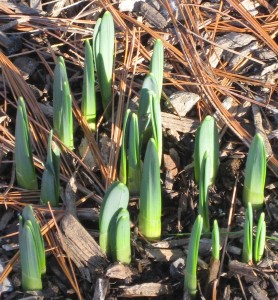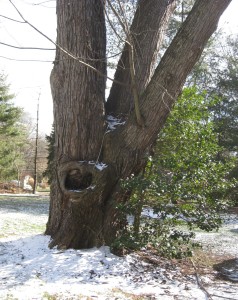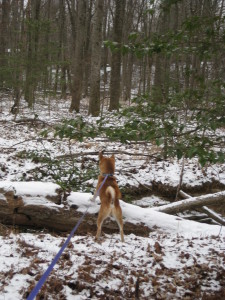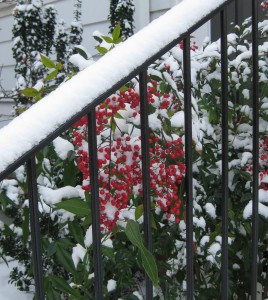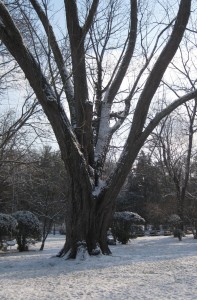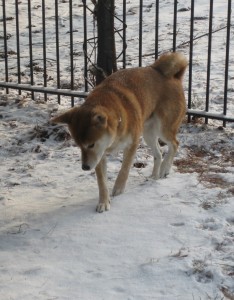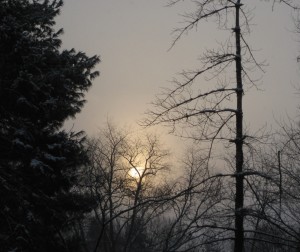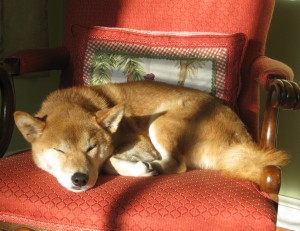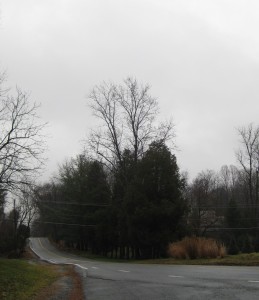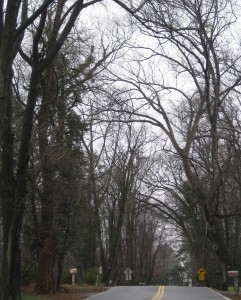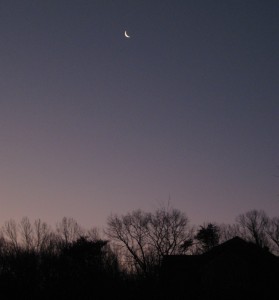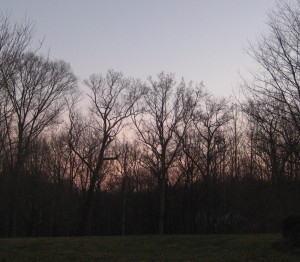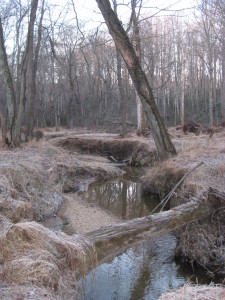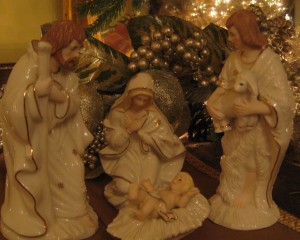There will be a blizzard raging this weekend just to the north of the DC area. It seems that northern Virginia has already received our meager portion of accumulation. We awoke to areas of white mushy crystals around the bases of trees. Pine boughs drooped slightly under a thin coating of watery ice. Now the temperature is rising and a light rain is falling. Kiko evaluated conditions from the dry warmth of the front hall and deemed it too yucky to hurry out on our morning walk. He is now cuddled on the office sofa, and I am very thankful. My daughter, of course, takes the lack of snow as yet another personal affront by her old nemesis, the Weather.
What should we call this ambiguous season? It’s winter one day, spring the next. I’m more used to this pattern than many people, having grown up in Atlanta, where 70-degree temperatures routinely alternate with those of 30- or 40-degrees. I remember when Virginia had four distinct seasons, but nowadays, they’re more of a blur.
Over the past week, the extreme cold has subsided here. As the fine layer of snow in our yard disappeared, it revealed one of our first signs of spring: the dark red clusters of buds that have fallen from our old silver maples. These seem to appear earlier and earlier every year. It’s not just a few buds, either, but many, heavily sprinkled over the yard. The readiness of our big, battered maples continues to amaze me. From the first cold days of winter, they are already anticipating spring. Like good scouts, they are prepared, standing sentry for the first warmer rays of sunshine. And during these recent winters, they receive many confusing signals: Get ready! No, wait! Yes, go ahead! No, no, no, hold up– it’s snowing! Wrong again–it’s only rain. I feel bad for our trees; such see-sawing conditions must be hard on their elderly systems.
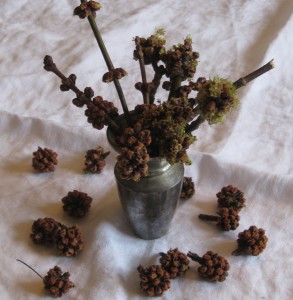
The melting snow revealed further evidence of a new season. Bright yellow-green daffodil shoots are already emerging from the ground. Unless you’re in the extreme north, you’re probably noticing them, too. The beginning of February really seems too early for them to be heading up and out, but who am I to judge?
Another unexpected sign of spring at our house is this: Kiko has already been dozing in his favorite sunny spot on the back terrace by the garage doors. I watched him as he settled there after an unsuccessful pursuit of a squirrel at the bird feeder. In years past, I don’t remember ever seeing him there before April or so.
And finally, what about the robins? I know I can’t be the only one to notice that the robins are choosing to remain with us in Virginia all winter long, just as they always do in Georgia. I used to remember noticing their distinct absence, as well as their much-anticipated return. They typically left around the first of December and showed up again with the melting snows of early March. But this winter and last, having apparently adjusted to the weather roller coaster, they haven’t bothered to fly south. They are hopping across our thawing lawn right now, drilling for worms.
To the many disappointed kids like my daughter, I’m sorry that the hoped-for snow is nothing but rain. I’m sorry today’s slush wasn’t even enough to warrant a two-hour delay. And to those of you in the path of this weekend’s storm, good luck, and take care. For all of us, spring (or sprummer?) will be here sooner than we expect. Although who can say what season will follow?
